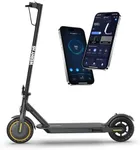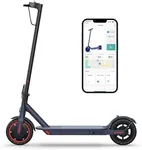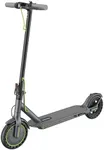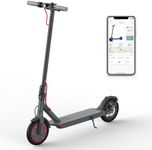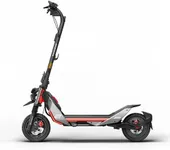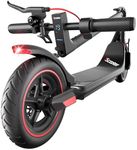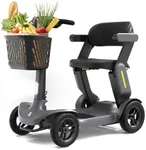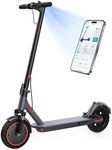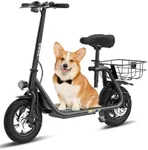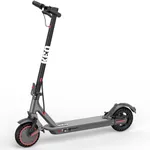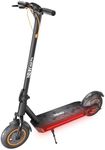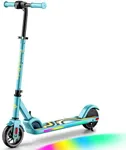Buying Guide for the Best Electric Scooters For Adults
Choosing the right electric scooter for adults involves considering various factors to ensure it meets your needs and preferences. Electric scooters can be a convenient and eco-friendly mode of transportation, but it's important to understand the key specifications to make an informed decision. Here are some essential specs to consider when selecting an electric scooter for adults.RangeRange refers to the distance an electric scooter can travel on a single charge. This is important because it determines how far you can go before needing to recharge. If you plan to use the scooter for long commutes, look for a model with a longer range, typically 20-30 miles or more. For shorter trips or occasional use, a range of 10-15 miles may be sufficient. Consider your daily travel distance and choose a scooter with a range that comfortably exceeds that distance to avoid running out of battery mid-trip.
Top SpeedTop speed is the maximum speed the scooter can achieve. This is important for determining how quickly you can reach your destination. Scooters with higher top speeds, around 20-25 mph, are suitable for longer commutes and open roads. For urban environments with lower speed limits and more traffic, a top speed of 15-20 mph may be more appropriate. Consider the speed limits of the areas where you will be riding and your comfort level with higher speeds when choosing a scooter.
Weight CapacityWeight capacity indicates the maximum load the scooter can safely carry. This is crucial for ensuring the scooter can support your weight and any additional items you may carry. Most adult electric scooters have a weight capacity of 220-265 pounds. If you are on the heavier side or plan to carry heavy bags, look for a scooter with a higher weight capacity to ensure safe and efficient performance.
Motor PowerMotor power, measured in watts, affects the scooter's acceleration and ability to climb hills. Higher wattage motors, such as 500W or more, provide better performance and are suitable for hilly terrains and heavier riders. For flat terrains and lighter riders, a motor power of 250-350W may be sufficient. Consider the terrain you will be riding on and your weight to choose a scooter with adequate motor power.
Battery Life and Charging TimeBattery life determines how long the scooter can operate before needing a recharge, while charging time indicates how long it takes to fully recharge the battery. Longer battery life and shorter charging times are desirable for convenience. Look for scooters with lithium-ion batteries, as they typically offer better performance and longevity. If you need to use the scooter frequently, choose a model with a shorter charging time to minimize downtime.
PortabilityPortability refers to how easy it is to carry and store the scooter. This is important if you need to take the scooter on public transportation or store it in a small space. Look for features like a foldable design and lightweight construction. Scooters weighing around 25-35 pounds are generally easier to carry. Consider your ability to lift and carry the scooter, as well as the available storage space, when choosing a model.
Tires and SuspensionTires and suspension affect the ride quality and comfort. Pneumatic (air-filled) tires provide better shock absorption and a smoother ride, especially on rough surfaces. Solid tires are puncture-proof but may offer a bumpier ride. Suspension systems, such as front or dual suspension, further enhance comfort by absorbing shocks from uneven terrain. If you plan to ride on rough or uneven surfaces, prioritize scooters with pneumatic tires and good suspension. For smoother roads, solid tires may suffice.
Braking SystemThe braking system is crucial for safety, as it determines how quickly and effectively you can stop the scooter. Common types include disc brakes, drum brakes, and electronic brakes. Disc brakes offer the best stopping power and are ideal for high-speed riding. Drum brakes are low-maintenance and provide reliable performance. Electronic brakes are often used in combination with other braking systems for added safety. Consider the speed and terrain you will be riding on to choose a scooter with an appropriate braking system.
Build Quality and DurabilityBuild quality and durability determine how well the scooter can withstand regular use and various weather conditions. Look for scooters made from high-quality materials like aluminum or steel, which offer better durability. Water resistance is also important if you plan to ride in wet conditions. Check for an IP rating, which indicates the level of protection against water and dust. A higher IP rating means better protection. Consider your riding environment and frequency of use to choose a scooter with the right build quality and durability.
